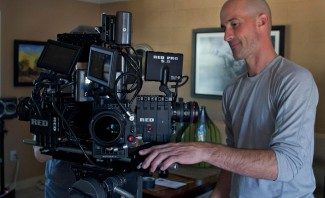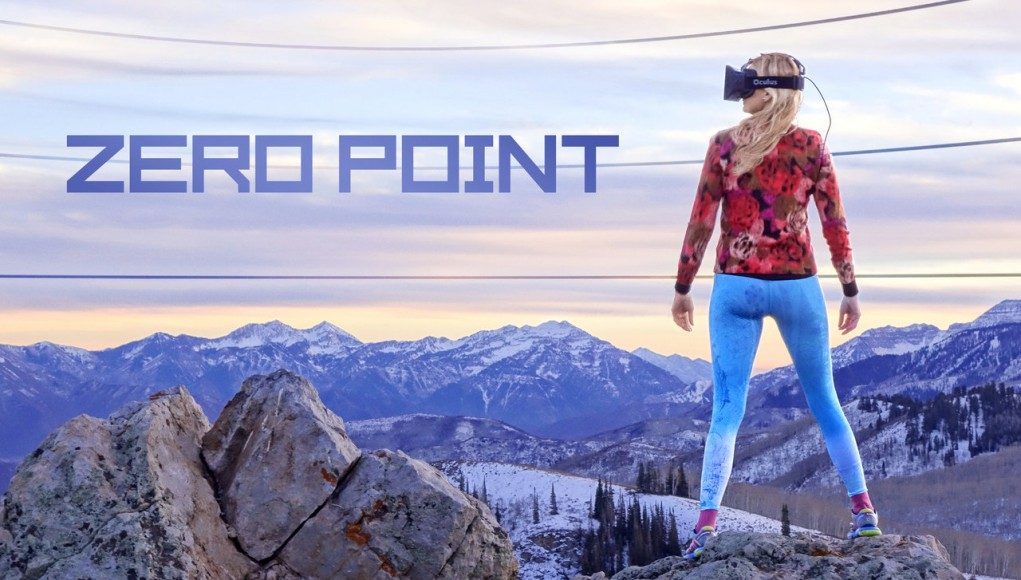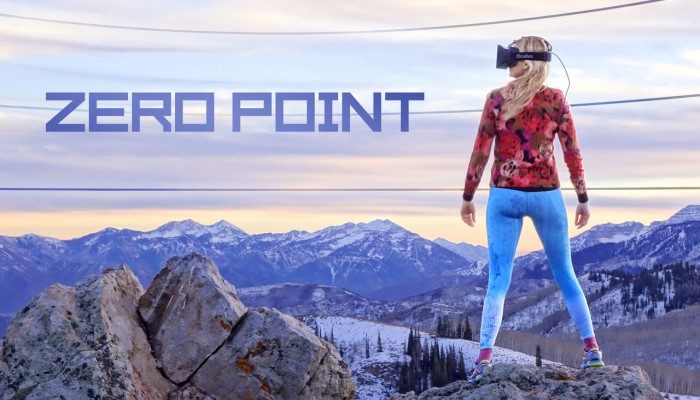Zero Point is the first 3D 360 degree documentary film to be released for the Oculus Rift VR headset. The film is not only shot for virtual reality, it’s also about virtual reality. Academy Award nominated director Danfung Dennis talks with virtual reality pioneers about the medium as he uses VR itself to bring viewers closer than ever to the subjects.
Danfung Dennis founded Condition One back in 2010 to explore immersive filmmaking. Dennis had a hunch that 360 degree footage—putting the viewer into the very center of the action—could be the future of the medium, but at the time the best way to view such content was through an accelerometer-enabled smartphone or tablet. And while this was interesting, it allowed users only a small window into the action.
When the Oculus Rift DK1 hit the scene in 2012, Dennis knew it was the next step for his immersive media initiative. In November of 2012, Condition One announced the production of Zero Point, a film about VR, also shot for VR. Today that film has finally launched on Steam, available for both the Oculus Rift DK1 and DK2.
Zero Point, approximately 15 minutes long, is a documentary and an experiment in immersive filmmaking for virtual reality. The film, which has been released today, has a launch sale through November 4th.

Dennis and his team shot Zero Point using a number of different camera rigs and processes. Viewers will see footage in 180 degrees, 360 degrees, and even some CGI—all of it is in 3D. The film engages VR pioneers Jeremy Bailenson, Mark Bolas, and Palmer Luckey, whose voices act as a backdrop to varied scenery.
Viewers are taken from the Golden Gate bridge, to a dilapidated and graffiti-ridden building, to a busy street with people speeding by in a time-lapse sequence, and plenty more. Some of the shots are more immersive than others, and you can get a feel for the different rigs and processes used for the various scenes.
When I got to preview the film back in March, I was blown away by the way that VR could connect me to the scene.
Another shot, featuring Mark Bolas from the MxR Lab, showed Mark behind an incredibly messy table filled with hot glue guns, soldering irons, materials, and other tools. In a way, the mess was beautiful. I could look around table while Mark was talking and I could almost feel what it was like to be in the lab. I could feel the character of the mess—that human hands were responsible for it. You can’t get that feeling out of the standard cinematography of today.
I recently got to see the final cut of the film using the Oculus Rift DK2.
One of my favorite sections of Zero Point focuses on live-fire military training. The sound of gunfire is particularly powerful as you watch soldiers—hunkered down behind cover—try to get the situation under control. It’s easy to get a sense of how intense a combat film could be when you feel like you’re in the middle of the street where sniper fire is keeping soldiers pinned down.
See Also: On the Set of ‘The Mission VR,’ A WWII Short Film Shot for Virtual Reality
There’s also some serene moments in the film. One particularly effective shot had me sitting in the middle of a busy city sidewalk. As the voice-over spoke of people milling about their relatively repetitive day-to-day lives, the people all around me began to speed up and zoom by—really emphasizing the point in an interesting way.
And there’s a great shot at the end of the film which Dennis says is “a shot you can only create in VR.” It’s one of my favorites from the film, but I’d rather leave it unspoiled.
Much of the footage will leave enthusiasts clamoring for better resolution—Dennis says its only a matter of time before we get there.
“This is to give people a visualization of what [VR storytelling] could be like.”
“We know the resolution needs to be a little bit higher before it’s super compelling,” Dennis told me. “Our camera technology and pipeline has been rapidly improving. As those techniques improve, our shots are getting better. The shots we did at the beginning of the film are not as refined, but as we progress, things get better… This is to give people a visualization of what [VR storytelling] could be like.”
When I asked Dennis about the rigs used to film the documentary, he told me that there isn’t yet a one-size-fits-all camera.
 “There really isn’t one solution that we’re really excited about… there’s a lot of different options. We’ve been using Red Epics in an array… they’re very high quality but they aren’t always ideal because the Red camera body is big and it makes it harder for the 3D up close,” Dennis told me. “We’ve been using DLSR’s and GoPros too… we’re going to need some sort of next-generation capture device until VR video comes into its own. This is a proof of concept to show that, even when it’s all hacked together with various cameras, it can still be a sign post of what’s to come. VR video is still at its DK1 moment I think… but you can imagine how things will get better as the tech improves.”
“There really isn’t one solution that we’re really excited about… there’s a lot of different options. We’ve been using Red Epics in an array… they’re very high quality but they aren’t always ideal because the Red camera body is big and it makes it harder for the 3D up close,” Dennis told me. “We’ve been using DLSR’s and GoPros too… we’re going to need some sort of next-generation capture device until VR video comes into its own. This is a proof of concept to show that, even when it’s all hacked together with various cameras, it can still be a sign post of what’s to come. VR video is still at its DK1 moment I think… but you can imagine how things will get better as the tech improves.”
See Also: NextVR’s Stereoscopic 360-degree VR Cam Uses $180,000 Worth of RED 6K Cameras
When it comes to VR filmmaking, the technical issues are just one hurdle. Directing in VR is difficult when the loop between setting up the camera and actually seeing what you shot isn’t yet as short as with traditional cameras.
“We’re still at the film days of ‘shoot with the black box’… hope you got the exposure and settings right… we’ve gotta get that feedback loop tighter and faster,” Dennis said. “We need to be able to view hundreds of hours of different shots and locations until we get a grasp for [directing in VR].”
And while there are interesting uses of the immersive medium in Zero Point, Dennis wants to take things further.
“[The film] is breaking new technical ground—360 3D video at 60 FPS—and the next step is to break creative ground”
“[The film] is breaking new technical ground—360 3D video at 60 FPS—and the next step is to break creative ground,” he said. “We’re just starting to touch on this… we’re going to be able to achieve a level of intimacy that’s hard to get in any other medium. You really are going to feel like you’re with the people in that space.”
While a documentary is a good starting point, Dennis sees the potential for many other types of storytelling within VR.
“…in some cases you will be just an observer, a ‘fly on the wall’ type experience. That will be very compelling. You’ll feel like you’re there but not actually present,” Dennis told me. “I think you’ll have another branch… you’re going to be there, characters will speak directly to you. You may have some audio that sounds first person, you may have a personality that’s maybe different form you own… it’s going to be first person storytelling in video… this is completely unexplored territory… I’ve yet to see a love story in VR… I’ve yet to see something that’s an awe inspiring experience like looking at a galaxy timelapse; you’re going to have very strong emotions… it’s completely open right now.”
Though in its infancy, the VR filmmaking space is rapidly heating up thanks to Condition One and others. We can’t wait to see where it ends up.
Full Disclosure: Condition One is running an ad on Road to VR.








